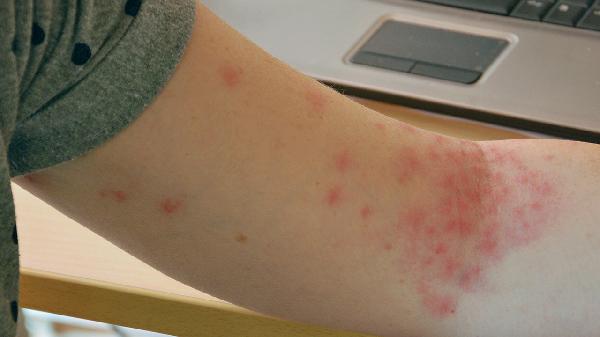Many people have questions: Is it certain that one will die if infected with AIDS? How long can one generally live? Besides sexual intercourse, what other ways can one contract AIDS? Let's find out together.
How long can one generally live after contracting AIDS?
A healthy person's progression from HIV infection to death is generally divided into three stages. The first stage is called the acute HIV infection period. After infection, a small number of infected individuals may experience flu-like symptoms such as fever, sore throat, rash, and swollen lymph nodes, which naturally disappear within 2-3 weeks.

Next, the infected person enters the second stage, known as the asymptomatic period, which accounts for about 80% of the time from infection to death. At this stage, the patient is referred to as an HIV carrier. Most infected individuals appear healthy and indistinguishable from normal people, but their immune system is engaged in an invisible battle with the virus.
HIV destroys a large number of immune cells every day, and the bone marrow compensates by accelerating the production of new cells. However, the rate of new cell production always lags behind the rate of cell loss. In a normal person, there are about 800 to 1000 immune cells per cubic millimeter of blood, while in an infected person, the number of immune cells per cubic millimeter of blood decreases by 50-70 each year. When the number of immune cells drops to around 200 per cubic millimeter of blood, the rate of decline accelerates. The duration of the asymptomatic period can vary greatly, ranging from as little as 2 years to as long as 20 years, depending on the route of infection. Generally, those infected through blood (mainly through illegal blood collection and sharing needles) have an asymptomatic period of 4-5 years, while those infected through sexual intercourse have an asymptomatic period of 11-13 years. If an infected person's asymptomatic period reaches 13 years, they can be considered a long-term survivor.
When the immune cells in the infected person's body can no longer fight HIV, it marks the final stage of HIV infection, known as the symptomatic period. At this stage, the infected person is referred to as an AIDS patient. They are highly susceptible to other infections, and common infectious diseases that would normally not threaten a person's life, such as pneumonia, can become uncontrollable once they enter the body of an AIDS patient. Death usually occurs within 6 to 24 months.
What are the ways to contract AIDS?
(1) Sexual contact transmission: Includes both homosexual and heterosexual sexual contact. Anal and oral sex carry a higher risk of transmission.
(2) Blood transmission: Includes: ① Transfusion of HIV-contaminated blood or blood products; ② Sharing of HIV-contaminated, unsterilized needles and syringes among intravenous drug users; ③ Sharing other medical equipment or personal items (such as toothbrushes or razors with an infected person) may also lead to transmission through broken skin, though this is rare. ④ Inadequate or non-existent sterilization of syringes and needles, especially in childhood vaccinations where one needle and one syringe are not used per person, poses a greater risk; inadequate sterilization of dental instruments, delivery instruments, surgical instruments, and acupuncture needles; non-sterilized razors, needles, and foot knives in barber shops, beauty salons (such as eyebrow tattooing, ear piercing), and tattoo parlors; sharing razors, shavers, or toothbrushes with others; transfusion of blood or blood products from donors who have not been tested for HIV antibodies, as well as similar situations in bone marrow and organ transplants; contact of a rescuer's broken skin with the blood of a bleeding victim during rescue operations.
(3) Mother-to-child transmission: Also known as perinatal transmission, where an HIV-infected mother transmits the virus to her fetus or infant before, during, or shortly after birth. This can occur through the placenta, during delivery through the birth canal, or through breastfeeding.
How to prevent AIDS in daily life:
(1) Practice self-discipline and avoid selling blood at illegal blood collection stations, stay away from adult entertainment venues, and do not casually enter certain entertainment places; maintain a strong awareness of AIDS prevention in any situation; do not harbor any侥幸心理; do not try drugs out of curiosity.
(2) Seek treatment at正规的 clinics or hospitals when ill, pay attention to blood transfusion safety, and avoid getting injections, tooth extractions, acupuncture, or surgeries at medical units, especially individual clinics, where medical instrument sterilization is unreliable. Do not use unsterilized instruments for ear piercing, tattooing, or美容.
(3) Do not share razors, toothbrushes, etc., with others, and try to avoid contact with others' body fluids and blood. Items contaminated by others should be promptly disinfected.
(4) Pay attention to contact with AIDS patients: When drawing blood or giving injections to AIDS patients, disposable syringes should be used. The patient's blood, excreta, and contaminated items should be彻底焚烧. The patient's utensils and medical instruments should be专用, such as the patient's razor, toothbrush, towel, and teacup, which should be专用. Wash hands with soap after urinating or defecating to achieve disinfection.
























